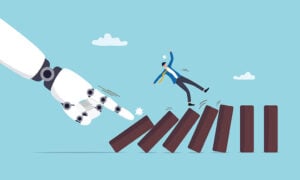
In this Advanced ESL lesson, students will practice future tenses. They will also learn about CRISPR and what it means to edit DNA. By the end of this lesson, they will be able to discuss moral dilemmas and share their own opinions on gene editing.
Warm-up
As a warm-up, the student reads a passage about genetic engineering and answers the questions related to the text. Before moving on to the video section, the student shares their knowledge of gene editing with the teacher.
Video: How CRISPR lets you edit DNA
The student watches the video How CRISPR lets you edit DNA and answers video comprehension questions. The student decides what purposes CRISPR has in different areas of our lives (accelerate experiments, increase grain yield, stem cell research, etc.).
The student matches the phrases they heard in the video with their meanings (record time, form the basis, medical marvel, etc.) and uses them to complete sentences.
Pick a card
The student picks a card with a disease that could be cured by CRISPR. Their task is to describe the disease without using the word on the card.
Vocabulary: gene editing
The student learns more gene editing terminology by matching it with the meanings (modification, genome, genetic sequence, etc.). Then, they use them to replace the underlined parts of sentences and complete the reading section.
Reading: CRISPR and sickle cell disease
After reading a passage about how sickle cell disease can be cured by CRISPR, the student marks statements based on the passage as true or false.
Grammar: Future – revision
The student reviews future tenses by answering some basic questions related to the use of future forms.
They read the sentences and decide which future forms were used in them (Future Perfect, Future Perfect Continuous, Future Continuous, Present Continuous). Next, they choose the correct future form for each sentence. They also practice using future forms by forming sentences using the given words, fixing the sentences that contain mistakes, and transforming present tense sentences into future sentences.
Reading and discussion: A moral dilemma
The student learns what a moral dilemma is and reads three examples of moral dilemmas. After reading each of the dilemmas, they say what they would do if they were facing them.
After discussing moral dilemmas, they sort out the pros and cons of gene editing.
Finally, the student pretends they are being interviewed for a position at a genetic modification company and answers a few questions related to gene editing from their perspective.

The Mutiny of the Machines
This C2 ESL lesson explores the complex risks and challenges of…

The AI Wake-Up Call
This C2 reading practice lesson takes students through a complete exploration…

Will robots replace us?
In this Upper-Intermediate lesson plan students will explore the social impact…


